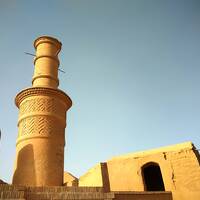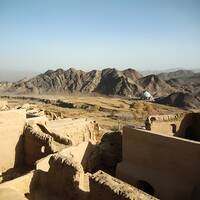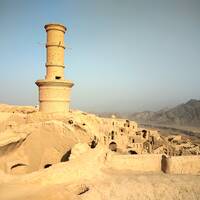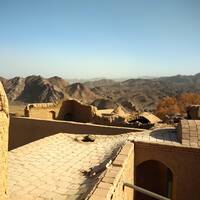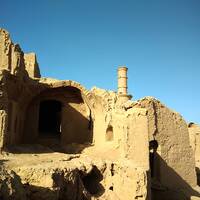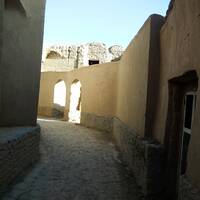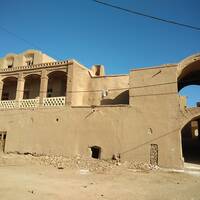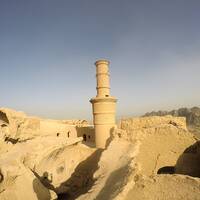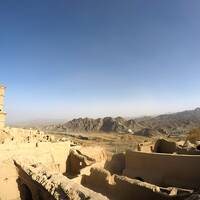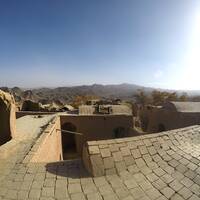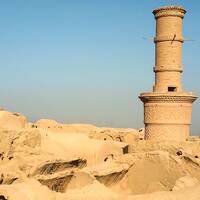Kharanaq Castle is a structure related to the historical eras after the advent of Islam that is located in Ardakan city, Kharanaq district, Kharanaq village. Locals believe that this ancient castle was built four thousand and five hundred years ago.
Kharanaq Castle along with its fortress backs to Sassanid period. The width of this area is more than one hectares and it is considered to be one of the largest residential castles in Yazd province. One interesting point about the architecture of this castle is the existence of roundabout alleyways that made extremely difficult for bandits and thieves to pass through the castle.
The castle includes eighty houses most of which had been constructed in two or three stories according to the social class and economic conditions. the walls of castle have been made of adobe and clay with a wooden and straw ceiling covered it.
The houses built in the castle have dome ceilings that are protected through six watchtowers. In addition to these watchtowers, there had been built four entrances namely Darvazeh Bala, Darvazeh Paein, Reza Khan Sardari and Khalu for the castle and some narrow alleyways around it among which the most famous is Gorg (meaning wolf). The name was being used in the past because in case of looters’ attack people led them to these alleyways and killed them.
In addition to this castle, there are many historical and natural attractions in Kharanaq village that you can visit. If you are intended to travel to Yazd or Tabas, don’t miss Kharanaq village and its attractions. One of the most interesting historical attractions in this region is the buildings of thousands years that were residential even to thirty years ago. The village is located along Yazd to Tabas road. It has a historical caravanserai, a castle, a bridge and a place namely Qadamgah.
The Kharanaq Castle was inscribed on the list of Iran National Heritages on Esfand 24, 1383 SH, with registration No. 11509 and it is currently open to visit for public, and the lovers of Iran culture and civilization.

